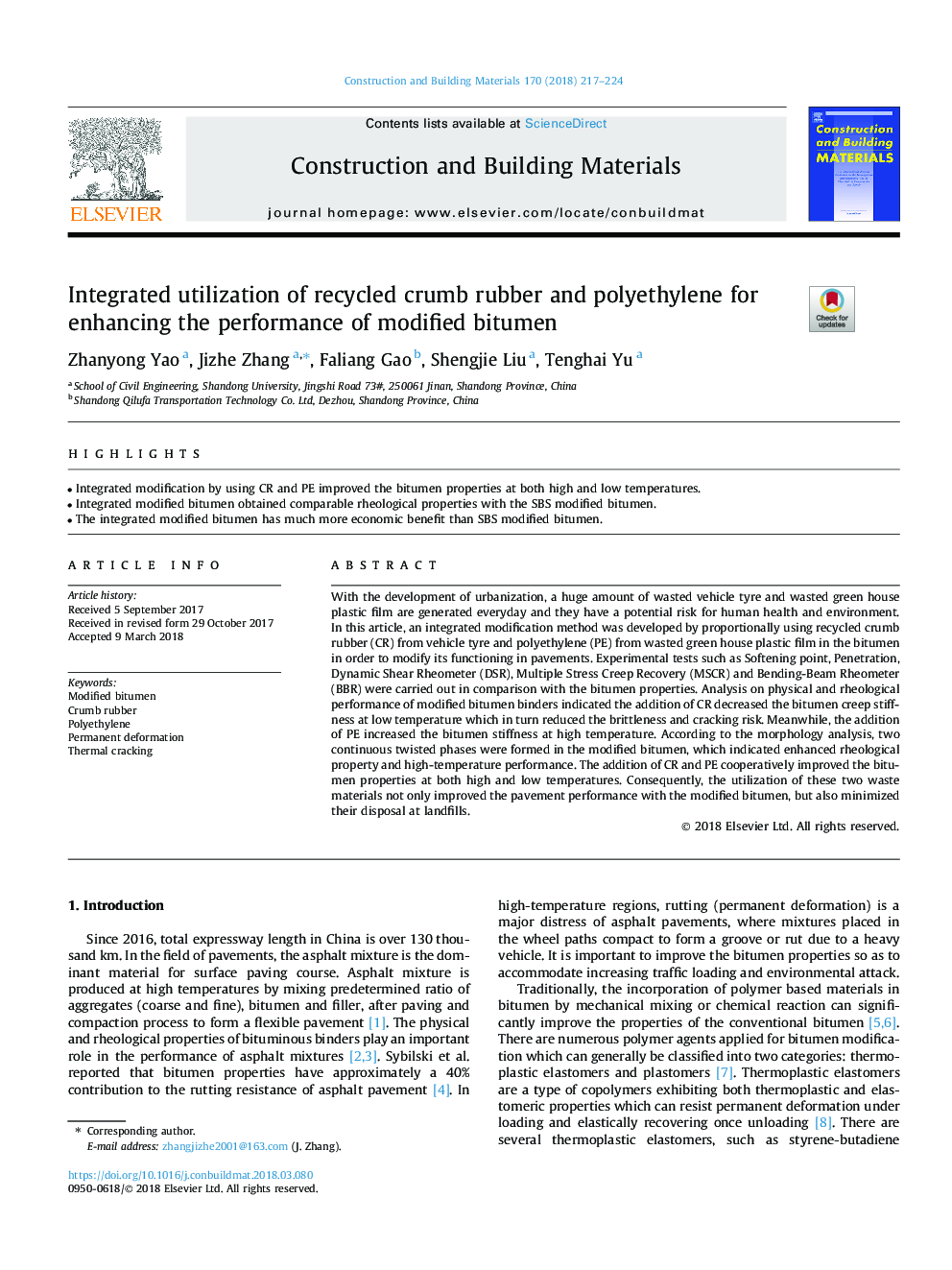| Article ID | Journal | Published Year | Pages | File Type |
|---|---|---|---|---|
| 6714128 | Construction and Building Materials | 2018 | 8 Pages |
Abstract
With the development of urbanization, a huge amount of wasted vehicle tyre and wasted green house plastic film are generated everyday and they have a potential risk for human health and environment. In this article, an integrated modification method was developed by proportionally using recycled crumb rubber (CR) from vehicle tyre and polyethylene (PE) from wasted green house plastic film in the bitumen in order to modify its functioning in pavements. Experimental tests such as Softening point, Penetration, Dynamic Shear Rheometer (DSR), Multiple Stress Creep Recovery (MSCR) and Bending-Beam Rheometer (BBR) were carried out in comparison with the bitumen properties. Analysis on physical and rheological performance of modified bitumen binders indicated the addition of CR decreased the bitumen creep stiffness at low temperature which in turn reduced the brittleness and cracking risk. Meanwhile, the addition of PE increased the bitumen stiffness at high temperature. According to the morphology analysis, two continuous twisted phases were formed in the modified bitumen, which indicated enhanced rheological property and high-temperature performance. The addition of CR and PE cooperatively improved the bitumen properties at both high and low temperatures. Consequently, the utilization of these two waste materials not only improved the pavement performance with the modified bitumen, but also minimized their disposal at landfills.
Related Topics
Physical Sciences and Engineering
Engineering
Civil and Structural Engineering
Authors
Zhanyong Yao, Jizhe Zhang, Faliang Gao, Shengjie Liu, Tenghai Yu,
